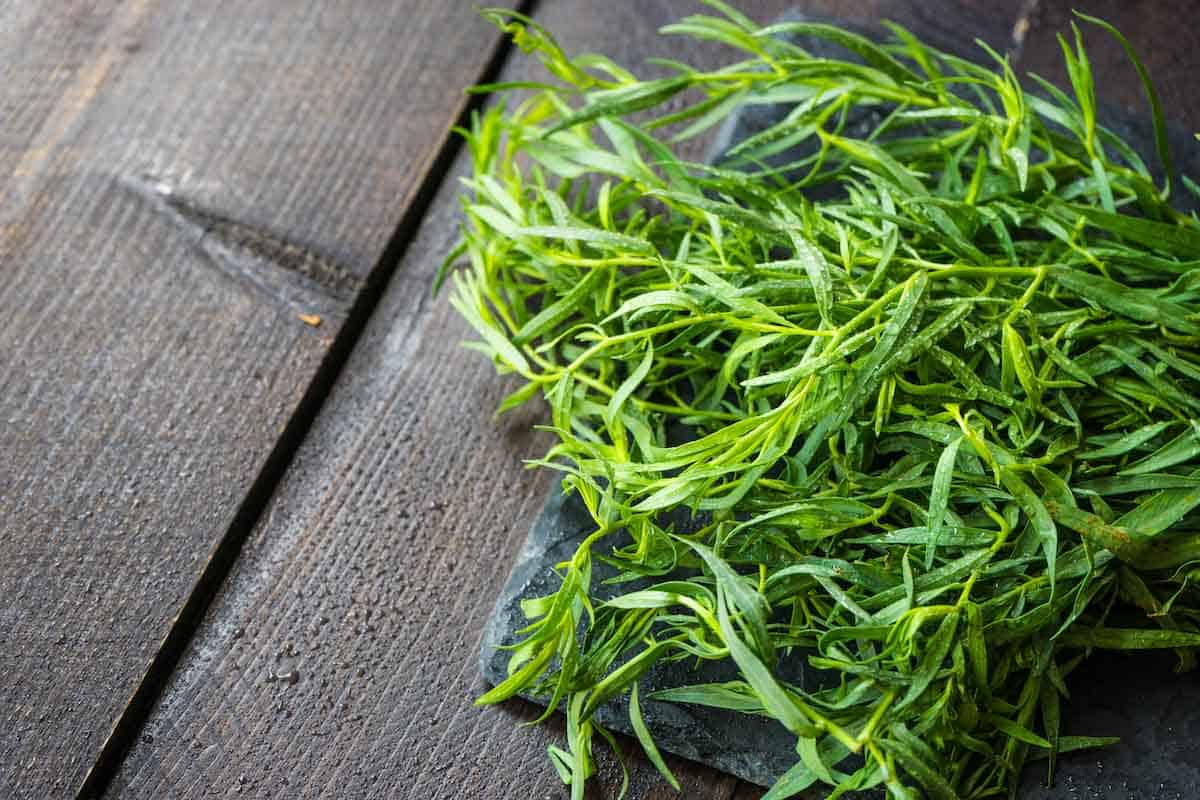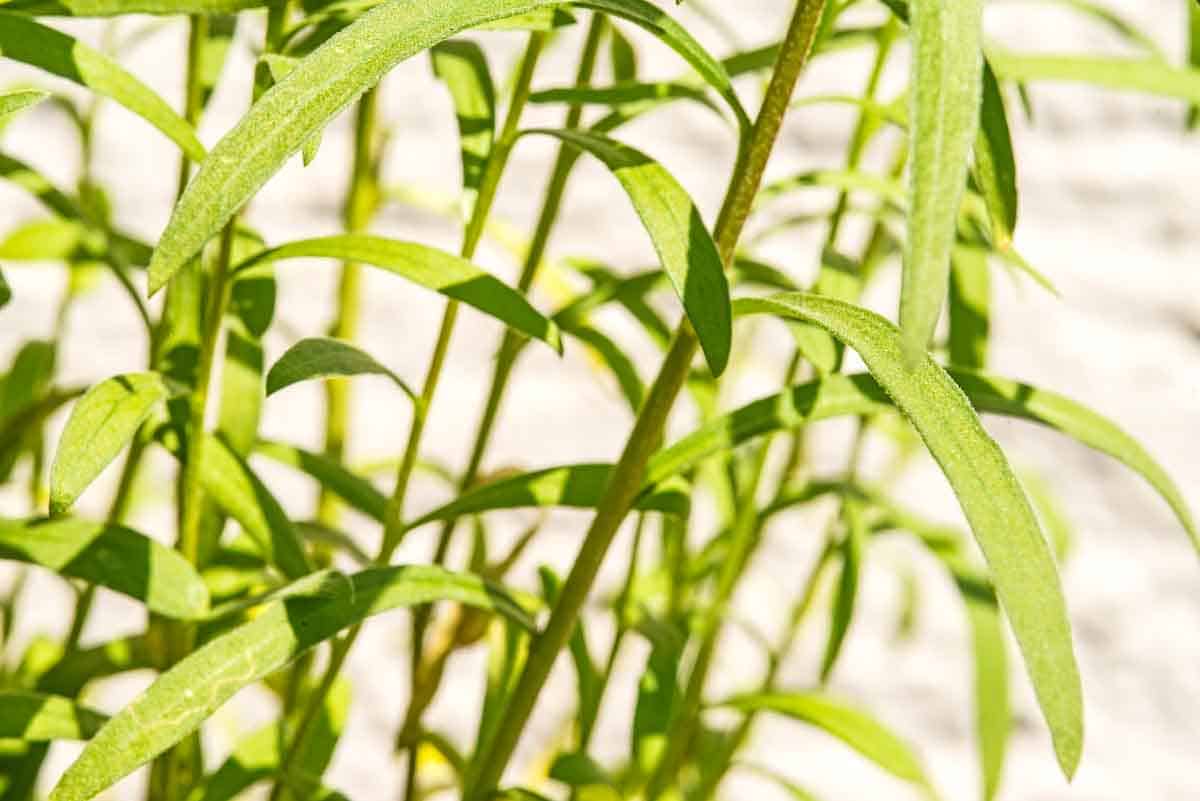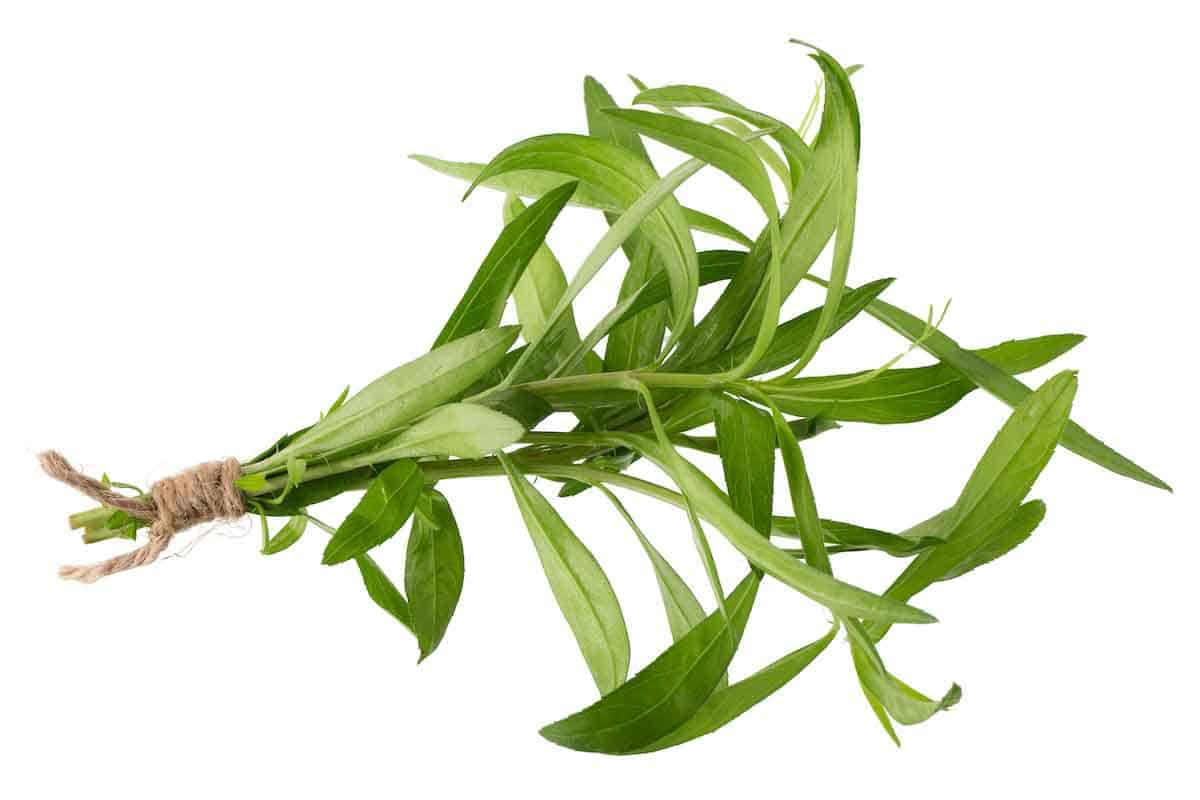With a slightly sweet, licorice or anise-like flavor, tarragon is primarily used in French cuisine, but it can be found in Mediterranean, Eastern European, American and Middle Eastern cuisines. Tarragon adds a delicate, herbaceous quality to classic sauces, marinades, salad dressings, poultry, seafood and meat dishes. This guide will provide you with all of the information you need to prepare, cook and store fresh tarragon to best preserve its flavor and texture.

Selecting fresh tarragon
There are two main types of tarragon: French and Russian. Both are relatively easy to grow. Russian tarragon is a hardier plant, but it is less flavorful.
Tarragon is a perennial herb that grows best in full sunlight in well-drained soil. Be sure to water it regularly, keeping the soil moist without waterlogging it.
It can be harvested from late spring through early fall. It’s best to remove the tips of the shoots at regular intervals to encourage new growth. You can strip the leaves away from the stalk with your fingers.
If you have the time and space, you can grow herbs inside as well. However, you will need to find a spot where you receive at least six hours of sunlight daily. Plant tarragon in a deep pot to provide room for its strong root system.
FDL’S 75 Best Bites

Our cookbook with 75 tasty recipes will be your go-to kitchen companion for easy dinners with ad-free recipes right at your fingertips. Crafted by experienced chefs and recipe developers, this collection offers a treasure trove of tried-and-true dishes that make mealtime a breeze.
Get the Recipe: FDL’S 75 Best Bites
When selecting a bunch of tarragon at the grocery store, be sure to choose one that is fragrant, with pliable stems that are neither wilted nor brittle. Pick a plant with vibrant green leaves and no signs of excessive moisture. Black and brown spots on the leaves indicate that it is no longer fresh.
“I love tarragon’s distinctive flavor and use it in sauces, soups and stews. I always go for the ones with bright green leaves and strong stems for a fresh bunch. I find tarragon doesn’t last long, but once I get it home, I wrap it up in a paper towel and place it in a plastic bag to keep it fresh.”
— Jere’ Cassidy, One Hot Oven

The taste of tarragon
Tarragon has a sweet, anise or licorice flavor that includes fresh, sometimes grassy notes. Its flavor is lighter and more nuanced than many other fresh herbs like rosemary. Instead, it provides a subtle flavor that complements poultry, seafood, sauces, marinades and vegetables.
Cleaning tarragon
To clean fresh tarragon, remove any packaging from the grocery store, including plastic containers, rubber bands or twist ties. Remove any wilted, dried, black or brown leaves. Then, remove any visible dirt or debris. Run the tarragon under cool water, pat it dry with a kitchen towel or paper towel or run it through a salad spinner to remove excess moisture.
Storage suggestions
Tarragon is considered a soft herb like dill or basil, so store it carefully to preserve its texture and flavor. The most popular storage option is to wrap the fresh herbs in a damp paper towel, place them in an airtight container and store them in the refrigerator.
You can also dry tarragon. Simply hang it using a piece of twine somewhere in your home that is relatively cool and dry. Once it is fully dried, store it in an airtight container. A dehydrator will achieve this result more quickly.

Tarragon can be frozen, too. Remove the leaves from the stem and add them to an ice cube tray. Pour water over top to cover and freeze for later use. You can add frozen tarragon to soups, stews and sauces. The defrosted herbs should not be used in fresh dishes like salads.
Culinary uses for fresh tarragon
It is best to add soft herbs near the end of the cooking process in sauces like the classic French Béarnaise. Fresh tarragon is also popular in dressings, marinades, aioli, butter, mustard, vinegar and other flavorful condiments.
Tarragon is a popular flavor for roasted meats like roast chicken and roast lamb. You can also try it in a variety of oils, teas and butter as a flavoring agent. It is wonderful as a garnish in salads, over pasta dishes or on seafood and vegetables.
“I love the flavor combination of tarragon with Dijon mustard. I often make a cream sauce with sautéed chicken cutlets that combines heavy cream, Dijon mustard, black pepper and tarragon — so delicious. Tarragon is also fantastic as a fresh herb in a Dijon vinaigrette!”
— Molly, Vanilla Bean Cuisine

Fresh tarragon is mostly used in savory dishes. While it’s most often associated with French food, it is prevalent in dishes throughout the Mediterranean, Middle East, Eastern Europe and America.
“As an Armenian who moved to the US, I was surprised at how underrated tarragon is here. This tasty herb is a staple in Armenian cuisine. We love to eat it fresh with eggs and flatbread in spring and during festive occasions like Easter. And for Armenian Christmas, we also make tarragon-stuffed trout that adds loads of flavor to the fish.
— Tamara, Thriving In Parenting
Final thoughts
Tarragon is a perennial herb that prefers full sun and well-drained soil. You can grow it indoors as long as you have an area with direct sunlight for most of the day. It’s added to a wide variety of savory dishes, from roast chicken to classic French sauces. Its sweet, mild, licorice flavor is subtle and herbaceous.
If you don’t have space to grow tarragon at home, you can buy it at the grocery store. Choose bunches with vibrant green leaves that are fragrant and soft. Avoid dried-out, wilted or spotted leaves and packages that have excess moisture. After washing your herbs, they can be stored in the fridge, dried or frozen.
Tarragon is popular in a variety of cuisines across several cultures, with the most prominent example being French cuisine. It is also used in Middle Eastern, Mediterranean, American and Eastern European cuisines. As with other soft herbs, tarragon is best added near the end of the cooking process or reserved as a garnish. Pick up some tarragon this week and discover the beautiful depth of flavor it can provide.
Gen La Rocca is a professional chef, writer and editor living in Southern California. She is the owner and recipe creator behind Two Cloves Kitchen, a food site featuring contemporary, California-inspired recipes. She has edited over 20 novels, short stories and essays for publication.